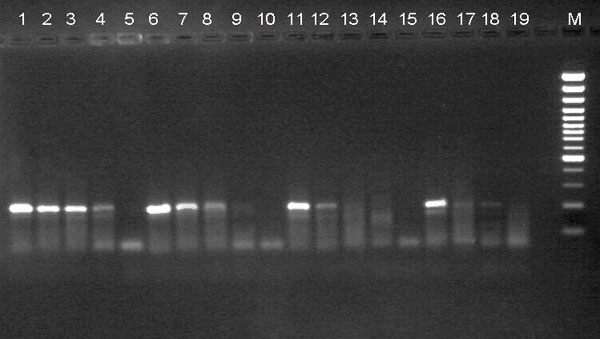Volume 7, Number 6—December 2001
Research
Hepatitis E Virus Sequences in Swine Related to Sequences in Humans, the Netherlands
Figure 1

Figure 1. Endpoint dilution polymerase chain reaction with the US2 human Hepatitis E virus (HEV) sample as reference (infectivity titer approximately 10 E.6). M: molecular mass marker; lanes 1-4 NLSW50 10-1,10-2,10-3 ;lanes 6-9: NLSW15 10-1,10-2,10-3; lanes 11-14: NLSW20 10-1,10-2,10-3; lanes 16-19 US2 10-1,10-2,10-3. Lanes 5,10 and 15 negative control water samples.
Page created: December 09, 2010
Page updated: December 09, 2010
Page reviewed: December 09, 2010
The conclusions, findings, and opinions expressed by authors contributing to this journal do not necessarily reflect the official position of the U.S. Department of Health and Human Services, the Public Health Service, the Centers for Disease Control and Prevention, or the authors' affiliated institutions. Use of trade names is for identification only and does not imply endorsement by any of the groups named above.